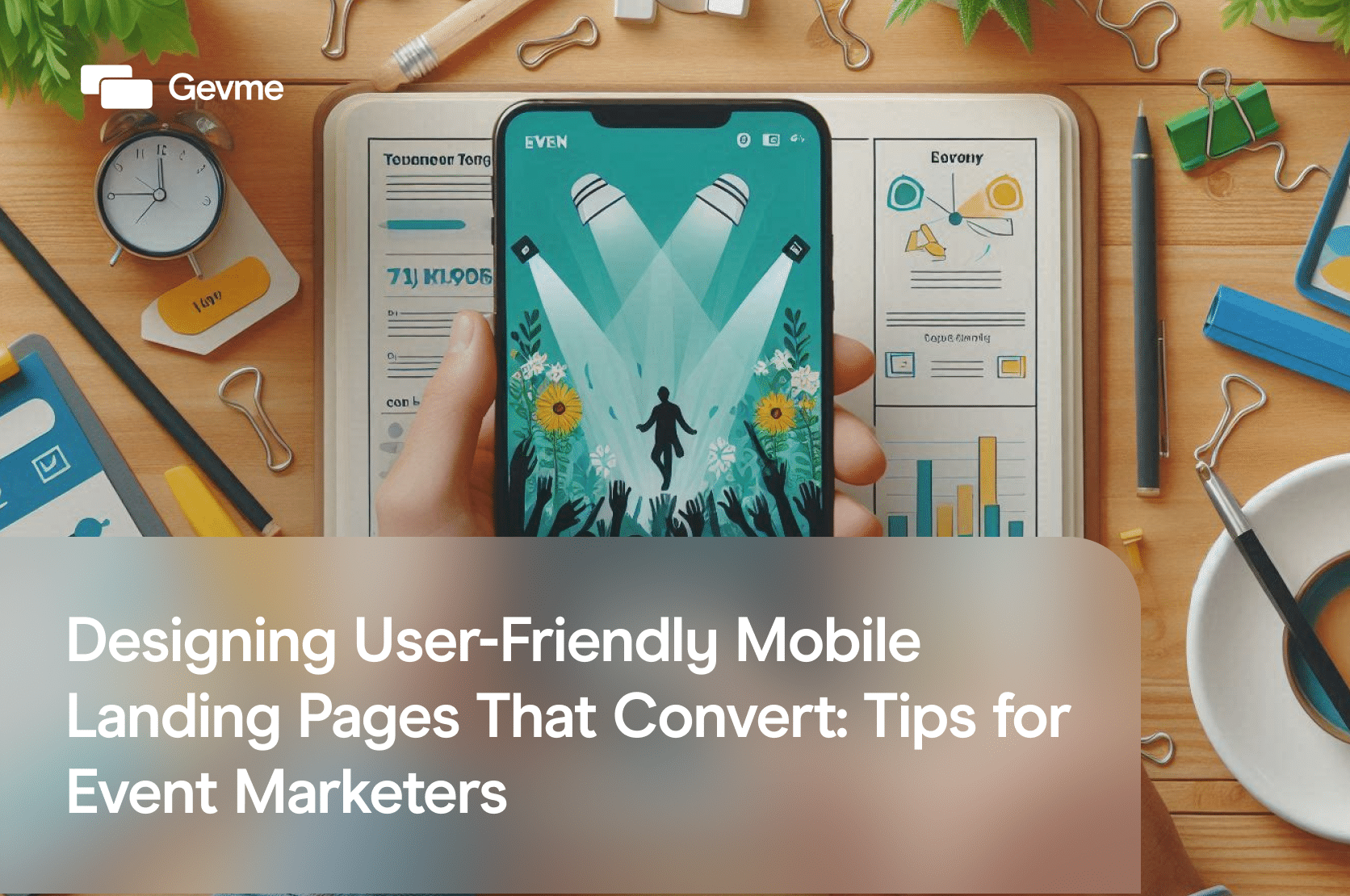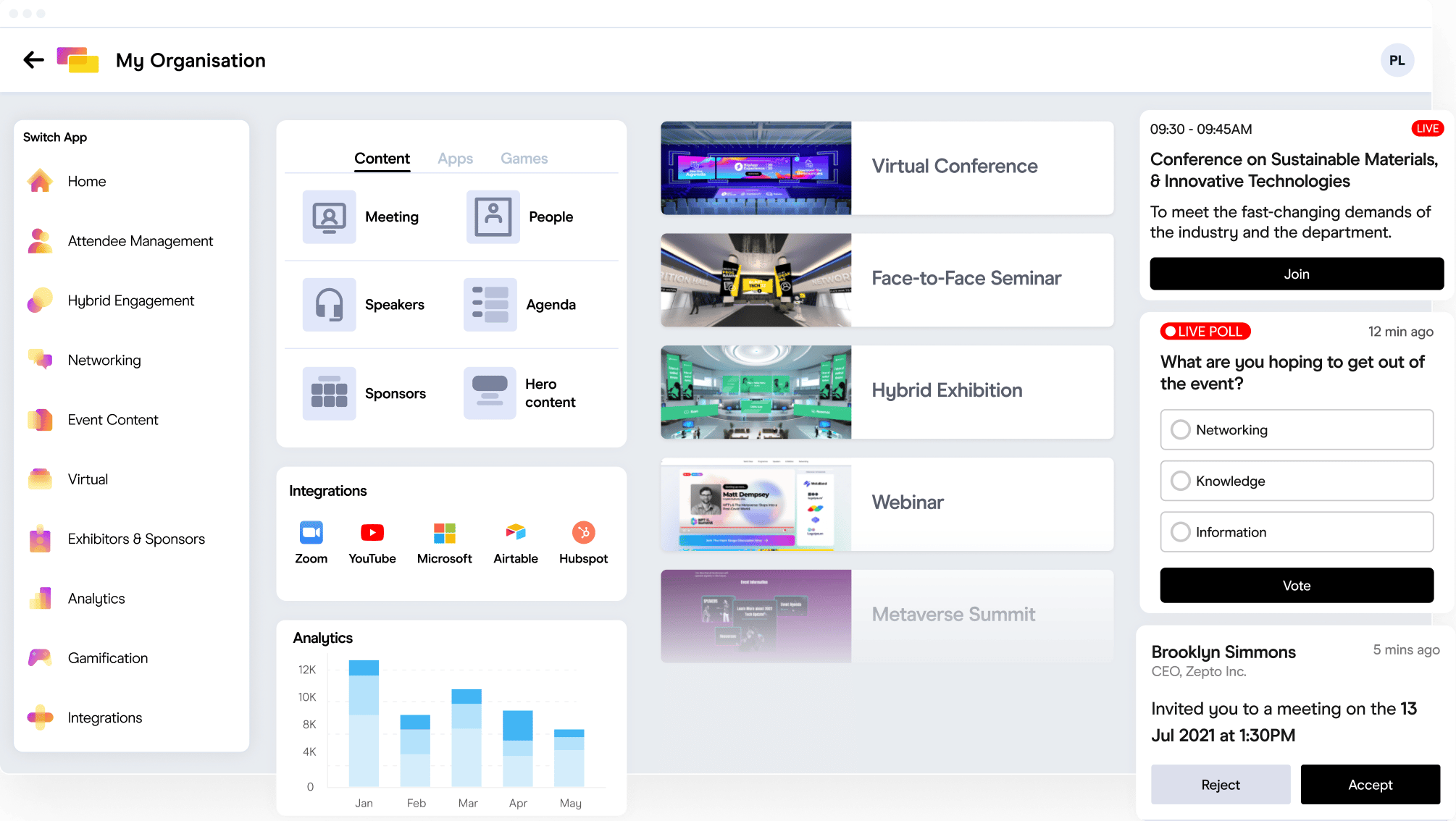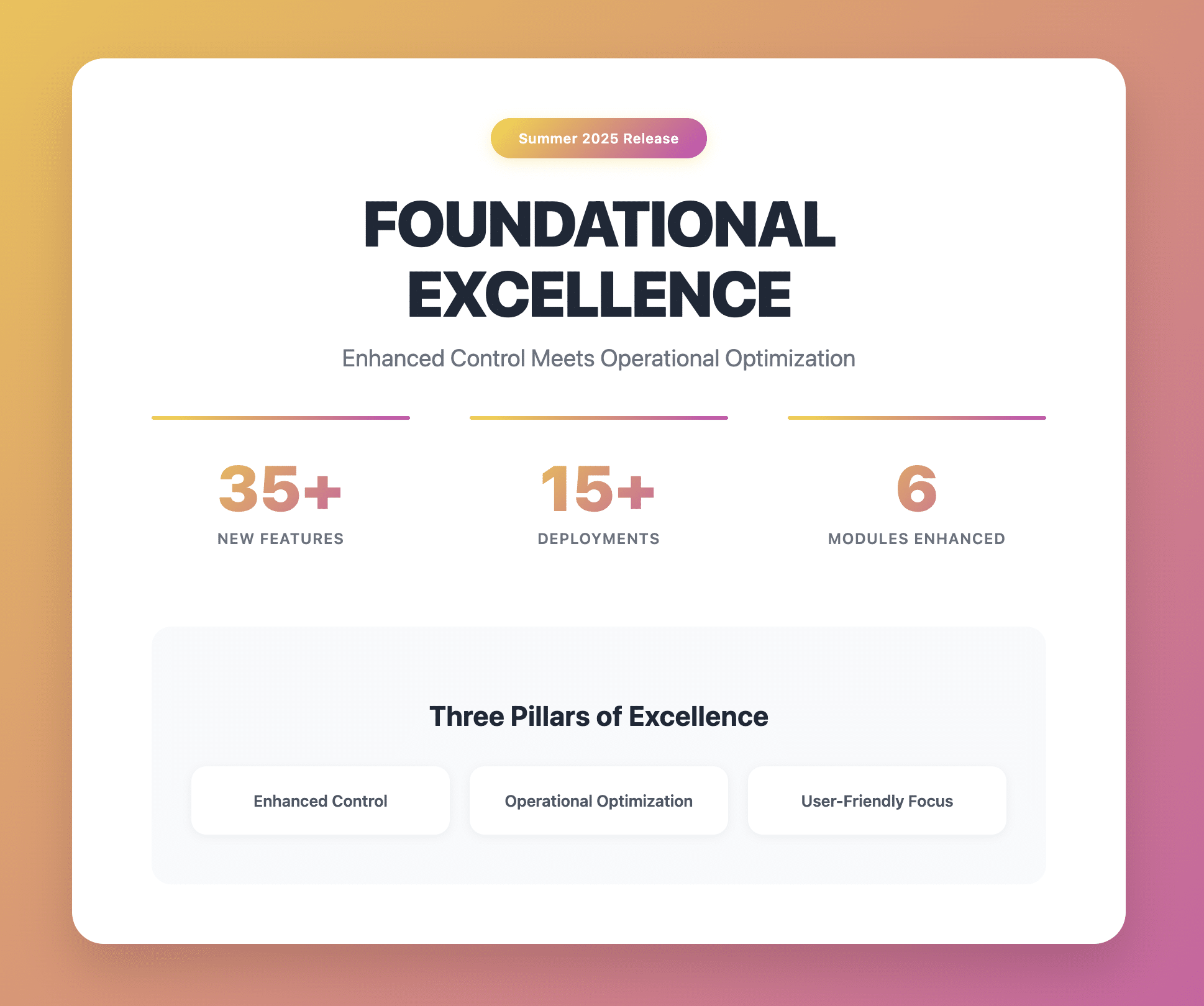In today’s mobile-driven world, event marketers face the critical challenge of optimizing their campaigns for the small screen. With an increasing number of attendees discovering and registering for events on their smartphones and tablets, neglecting mobile optimization can lead to a significant drop in conversions and missed opportunities.
User-friendly mobile landing page creation has emerged as a powerful tool for event marketers to drive event registrations and capture leads effectively. These dedicated web pages, designed specifically for mobile devices, play a crucial role in delivering a seamless and engaging experience to potential attendees, ultimately boosting conversion rates.
However, user- friendly mobile landing page creation requires a deep understanding of the unique behaviors and expectations of mobile users, as well as best practices for mobile user experience (UX) design.
In this comprehensive guide, we’ll explore the essential elements of user-friendly mobile landing page creation that converts, with a particular focus on the needs of event marketers. From leveraging best event management apps to implementing data-driven optimization techniques, we’ll cover a range of strategies to help you maximize the impact of your mobile event marketing campaigns.
The Rise of Mobile in Event Marketing
The significance of mobile devices in the event industry cannot be overstated. As technology continues to evolve, attendees are increasingly relying on their smartphones and tablets to discover, research, and register for events. This shift towards mobile-first event experiences has disrupted traditional marketing strategies, compelling event organizers to adapt and prioritize mobile optimization.
Statistics underscore the growing dominance of mobile in the event marketing landscape. According to a recent study, over 60% of event attendees use their mobile devices to access event-related information, with a staggering 85% expressing a preference for a dedicated mobile app or optimized website. These numbers highlight the immense potential for event marketers to reach and engage their target audience through effective mobile strategies.
Embracing a mobile-first approach in event marketing is no longer an option; it’s a necessity. By designing experiences tailored for the small screen, event organizers can ensure a seamless and user-friendly journey for attendees, from initial discovery to registration and beyond.
Mobile landing pages play a pivotal role in this mobile-first event marketing strategy. These dedicated web pages, optimized for mobile devices, serve as the gateway to capturing attendee interest and driving conversions. With carefully crafted content, visually appealing designs, and intuitive navigation, mobile landing pages can provide a compelling and engaging experience that resonates with the on-the-go attendee.
However, creating user-friendly mobile landing pages requires a deep understanding of mobile user behavior and preferences. Event marketers must consider factors such as smaller screen sizes, varying device capabilities, and the need for quick information consumption. By addressing these unique challenges, event organizers can deliver a seamless and friction-free experience that encourages attendees to take desired actions, such as registering for the event.
The Anatomy of a High-Converting Mobile Landing Page
Let’s face it, creating a user-friendly mobile landing page that actually converts is no easy feat. With limited real estate and short attention spans, you’ve got to nail the essentials from the get-go. So, what exactly goes into crafting one of these high-performing pages?
At its core, an effective mobile landing page needs to deliver a clear and compelling value proposition. Think of it as your marquee pitch – the reason why someone should care about your event and take action. This proposition should be front and center, communicated through punchy, benefit-driven copy and eye-catching visuals.
Speaking of visuals, designing for mobile is a visual-first game. With just a quick glance, your landing page needs to make an impression and entice the viewer to keep scrolling. Crisp, high-quality images and videos that showcase the event experience can work wonders. But be mindful of load times – no one wants to wait an eternity for media-heavy pages to load.
Now, let’s talk about those all-important calls-to-action (CTAs). Your CTA button is the gateway to conversion, so it needs to stand out and leave no doubt about the desired action. Use contrasting colors, prominent placement, and action-oriented copy (think “Register Now” instead of “Click Here”) to grab attention and drive those clicks.
Remember, mobile users are often on-the-go, so your landing page needs to be a master of prioritization. Focus on the essential information and present it in a logical, easy-to-scan format with clear headings and bite-sized chunks of text. Resist the urge to cram every detail onto one page – you can always link out to additional content if needed.
Optimizing for Mobile User Experience
Let’s be real – in today’s world, we’re all mobile users. We expect websites and apps to load lightning fast and navigate like a dream, no matter what device we’re on. And when it comes to mobile landing pages for events, that expectation is amplified tenfold.
Think about it. You’ve crafted the perfect page, with a killer value proposition and eye-catching visuals. But if it takes forever to load or looks like a hot mess on a smartphone, you can kiss those conversions goodbye faster than you can say “pinch to zoom”.
That’s why optimizing for a seamless user experience (UX) in your user-friendly mobile landing page creation is absolutely crucial. We’re talking responsive design that automatically adjusts to any screen size, ensuring your landing page looks pixel-perfect whether someone’s on an iPhone or a massive Android tablet.
But it’s not just about looks – performance plays a huge role too. Mobile users are an impatient bunch, so if your page takes more than a couple of seconds to load, you can bet they’re hitting that back button before you can blink. Optimizing images, enabling browser caching, and minimizing HTTP requests are just a few tricks to shave those precious milliseconds off load times.
Once someone’s on your page, the experience needs to be smooth sailing. Easy thumb-friendly navigation, logical content ordering, and clear calls-to-action that minimize taps and typing. It’s all about reducing friction and making the journey to registration as effortless as possible.
At the end of the day, prioritizing mobile UX is a surefire way to keep those bounce rates low and conversion rates high. It shows your audience that you truly understand their needs and are committed to delivering an exceptional experience from start to finish. So don’t sleep on those optimizations – your bottom line will thank you for it.
Leveraging Gevme for Enhanced Mobile Event Experiences
In today’s mobile-centric world, adopting advanced tools like Gevme’s mobile app and its Mini Experience feature is essential for maximizing attendee engagement and conversion rates. Here’s how these tools can transform your mobile event marketing:
Gevme Mobile App:
- Interactive Features: The app includes Metacard, a digital business card that streamlines networking by facilitating the easy exchange of contact information using QR codes. This tool is invaluable for fostering connections in a sustainable, paperless manner.
- Efficient Event Navigation: Features a QR code scanner that attendees can use to quickly access specific parts of the event, such as workshops, keynote sessions, and exhibitor booths, enhancing the user’s journey and reducing time spent on manual searches.
Gevme Mini Experience:
- Real-Time Engagement Tools: The Mini Experience enhances attendee engagement through interactive polls, live Q&A sessions, and surveys, enabling organizers to collect valuable feedback instantly and adjust the event dynamics in real-time to better suit attendee needs.
- Customizable and User-Friendly Mobile Landing Page Creation: Event marketers can easily create personalized, dynamic content that is optimized for mobile devices. This feature supports the inclusion of rich media such as videos and interactive elements, designed specifically to capture and hold the user’s attention on smaller screens.
- Gamification for Enhanced Participation: Incorporates gaming mechanics into the event experience, encouraging attendees to participate in challenges and activities that promote learning and interaction. This not only makes the experience more enjoyable but also increases attendee retention and engagement.
- Seamless User Experience: All these features are integrated within the GEVME mobile app, ensuring a seamless and unified experience for users. This integration helps in maintaining a consistent brand voice and user interface across all touchpoints, providing a professional and engaging event atmosphere.
By leveraging these tools from Gevme, event organizers can craft compelling mobile landing pages that not only captivate attention but also drive meaningful interaction and event participation.
Conversion Rate Optimization (CRO) Tactics
You’ve built a stunning mobile landing page with killer content, but the conversions just aren’t rolling in like you’d hoped. What gives?
Here’s the hard truth – no page is perfect out of the gate. The most successful event marketers live and breathe a philosophy of continuous conversion rate optimization (CRO). It’s all about relentlessly testing, analyzing, and iterating to unlock maximum registration potential.
Where to begin? With so many elements at play like headlines, images, CTAs, and form fields, it can be overwhelming to pinpoint the areas ripe for optimization. That’s where A/B testing comes in clutch. A/B testing lets you pit two variations of a page or element against each other to see which one performs best. Run a test swapping your hero image for example, and let the hard data decide the winner based on conversion metrics. Tools like Google Optimize make it easy to run rigorous experiments without IT hand-holding.
But A/B testing is just the start of your CRO journey. Smart marketers dig deep into granular elements like button colors, copy length, and even layout changes like removing distracting navigation menus. These micro-optimizations can collectively yield macro conversion gains.
Of course, optimizing isn’t just about assumptions – it’s a data-driven exercise. Keep a close eye on mobile metrics like bounce rate, time on page, click mapping, and conversion tracking.
At the end of the day, CRO is an ongoing process of tweaking and refining based on real user data. Mobile attention spans are fickle, so staying on top of these optimization tactics will ensure your mobile event promotion stays fresh, engaging, and focused on driving maximum conversions.
Integrating with Event Registration Systems
User-friendly mobile landing page creation that delivers high conversions is only half the battle.To truly maximize registrations from your user-friendly mobile landing page creation, you need a seamless integration with your event registration platform and software.
The key here is removing any unnecessary friction in that registration process. Even the slightest bump can lead to drop-offs and abandoned registrations on mobile. That’s why choosing an event management solution with a smooth, mobile-optimized registration flow is critical. Top platforms like Gevme offer customizable registration modules and embeddable widgets that integrate directly into your landing pages. This allows attendees to complete the full registration, including secure payments, without ever leaving your branded mobile experience.
When setting up these registration integrations, think about ways to streamline the process as much as possible on mobile. Minimizing form field entries by allowing things like email auto-fills and pre-populating known attendee data can eliminate tedious typing.
You’ll also want the flexibility to customize that registration flow for different mobile screen sizes and breakpoints. The last thing you want is an awkwardly stacked form that requires tons of scrolling and pinching to complete.
Don’t forget about post-registration communications too! Most event registration platforms allow you to automate customized confirmation emails, reminders, and other updates – keeping attendees engaged and informed through the entire pre-event journey.
By prioritizing a tight integration with your event registration system, you create a cohesive branded experience that guides mobile users seamlessly from landing page to registration and beyond.
Analytics and Tracking
You’ve built a gorgeous, conversion-optimized mobile landing page integrated with your event registration system. But how do you actually measure its performance and impact? That’s where analytics and tracking come into play.
Google Analytics is a no-brainer starter tool for understanding your mobile audience. Beyond the basics like traffic sources and bounce rates, you’ll want to hone in on mobile-specific metrics:
- Device category data to segment smartphone vs tablet engagement
- User behavior flows to identify drop-off points in the funnel
- In-page analytics like click mapping to optimize mobile UX
Don’t forget to leverage advanced behavior tracking either! Tools like Facebook Pixel, Google Tag Manager, and third-party analytic providers help you monitor micro-interactions and goal conversions more granularly.
For example, you could set up custom event tracking to measure engagement rates for expandable content sections, video plays, or even mobile form field completions as leading indicators to registration. Mobile heatmap and session recordings take your UX analysis a step further by giving you a first-hand look at how users are physically interacting with and navigating your mobile landing pages.
As you analyze the data, look for areas of underperforming engagement, high drop-offs, or confusing user flows. These pain points can inform your ongoing A/B testing and optimization strategy. If budget allows, consider investing in advanced tools designed specifically for mobile conversion tracking like Hotjar, Smartlook, or FullStory. They offer visually-friendly dashboards for dissecting every facet of the mobile user journey.
At the end of the day, leveraging the right analytics stack will illuminate powerful insights about your mobile audience’s interests and behavior patterns. Armed with this knowledge, you can continually refine your mobile event marketing tactics for maximum impact.
Conclusion
In today’s mobile-driven world, event marketers can no longer afford to treat the small screen as an afterthought. Creating a seamless, high-converting mobile experience needs to be a top priority.
Throughout this comprehensive guide, we’ve explored the essential elements and best practices for user-friendly mobile landing page creation tailored to the unique needs and behaviors of mobile event attendees. We’ve also dived into advanced tactics like leveraging innovative solutions like Gevme’s mobile app and Mini Experience creator. Tools like these empower event marketers with robust engagement features and easy mobile landing page builders – eliminating tedious code work.
The future of events is unquestionably mobile-first. Implement the strategies and solutions covered here, and you’ll be well on your way to crafting mobile experiences that captivate your audience and convert like never before.








